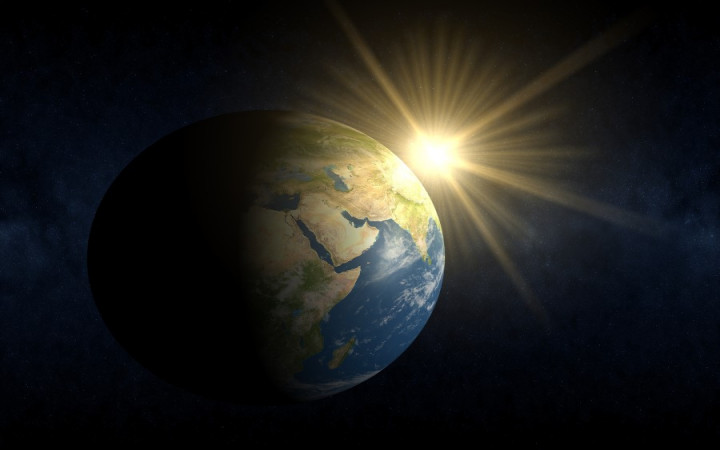This planet we call home is an amazing place. It's been around for as long as we can remember. But how did it get to be that way? Exactly how did Earth come into existence?
For some people, WONDERing about how Earth came to exist is more of a philosophical question. It happened so long ago that it's hard to know for sure how it all happened. No one was around back then to document things.
Many religions around the world have specific beliefs about how Earth began. Some believe a divine creator brought Earth and all of the things in the universe into being. Others believe that tangible, physical processes are responsible.
In today's Wonder of the Day, we'll take a look at the prevailing view held by most scientists regarding how Earth formed. So let's get things started with a bang. A big bang to be exact!
Billions of years ago, all matter of the universe was compressed into one tiny point until it finally exploded around 12-14 billion years ago. This explosion is what scientists call the Big Bang.
During this time, humongous masses of dust and gas spewed throughout space. These remnants of the explosion combined with other clouds of gas to form the ingredients that would eventually turn into our galaxy.
The explosion's massive energy made the mixture of gas and dust very hot. As the pieces of dust swirled about, they started to compress to form small clusters, which in turn joined other small clusters to make bigger and bigger lumps of matter.
As these lumps of matter got larger, they began to pull together under the force of their own gravity. The largest of these lumps in the center eventually became so dense and hot that it began to generate its own energy. This is how our Sun was born.
The rest of the lumps of matter formed a disc around the Sun. Over time, the Sun got bigger while the dusty disc surrounding it cooled. As this process occurred over millions of years, lumps of dust again began to form into larger and larger chunks of rock, called planetesimals, which became large enough to have their own gravitational pull.
The largest of the planetesimals became the earliest forms of the planets that make up our solar system today. Slowly, they organized themselves in orbits around the Sun and their gravitational pulls cleared the areas around them of rocky material.
Scientists believe Earth formed in this way about 4.6 billion years ago. Early in the process of its formation, a planetesimal the size of Mars hit Earth, knocking a big chunk of Earth into space. Scientists believe that chunk started its own orbit around Earth, becoming our Moon. They also believe this collision changed the angle of Earth's tilt to its current orientation, which gives us our seasons.
Early Earth didn't look anything like it does today. It was simply a big ball of rock without oceans, continents, or an atmosphere. Continued collisions with meteorites, along with radioactive decay and further compression due to gravity, heated up Earth until it reached the melting point of iron and Earth's core was formed.
Over millions of years, Earth eventually cooled and its composition settled into the core, mantle, and crust we know of today. Scientists believe Earth's oceans and atmosphere didn't come along until about four billion years ago, as a result of volcanic activity or meteors hitting Earth and releasing water and gases trapped under its surface.




